Are you confused about Sprout Social’s pricing and plans? You are not alone; many are trying to find value in this cost.
First and foremost, it was price. It was ridiculously expensive. And quite honestly, I wouldn't have had such an issue with the cost if I would have found anything unique from their platform.
If you open Sprout's reviews on G2, Capterra, Reddit, Facebook groups, and other forums, you will find that they are filled with people like you who are confused about what things (premium) they are getting for such high prices.
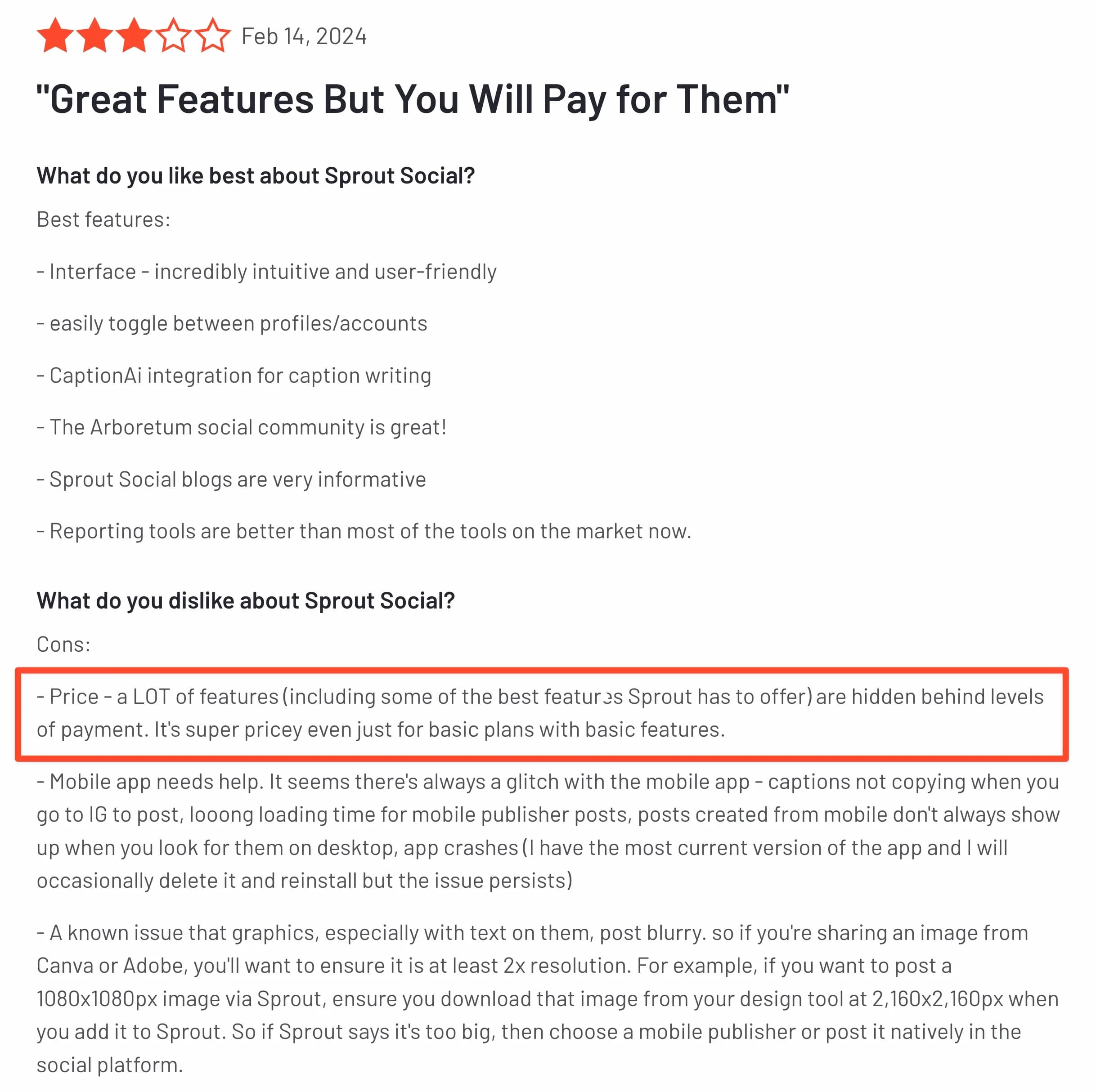
(Source: G2.com)
This article would dissect Sprout Social's cost so that you choose the right plan and don't end up paying a lot and still having a crippled experience (like having a one user seat for your entire team for $399/mo.)
(We've also compiled a list of Sprout Social alternatives that offer feature parity at a better price point.)
Sprout Social pricing and plans explained
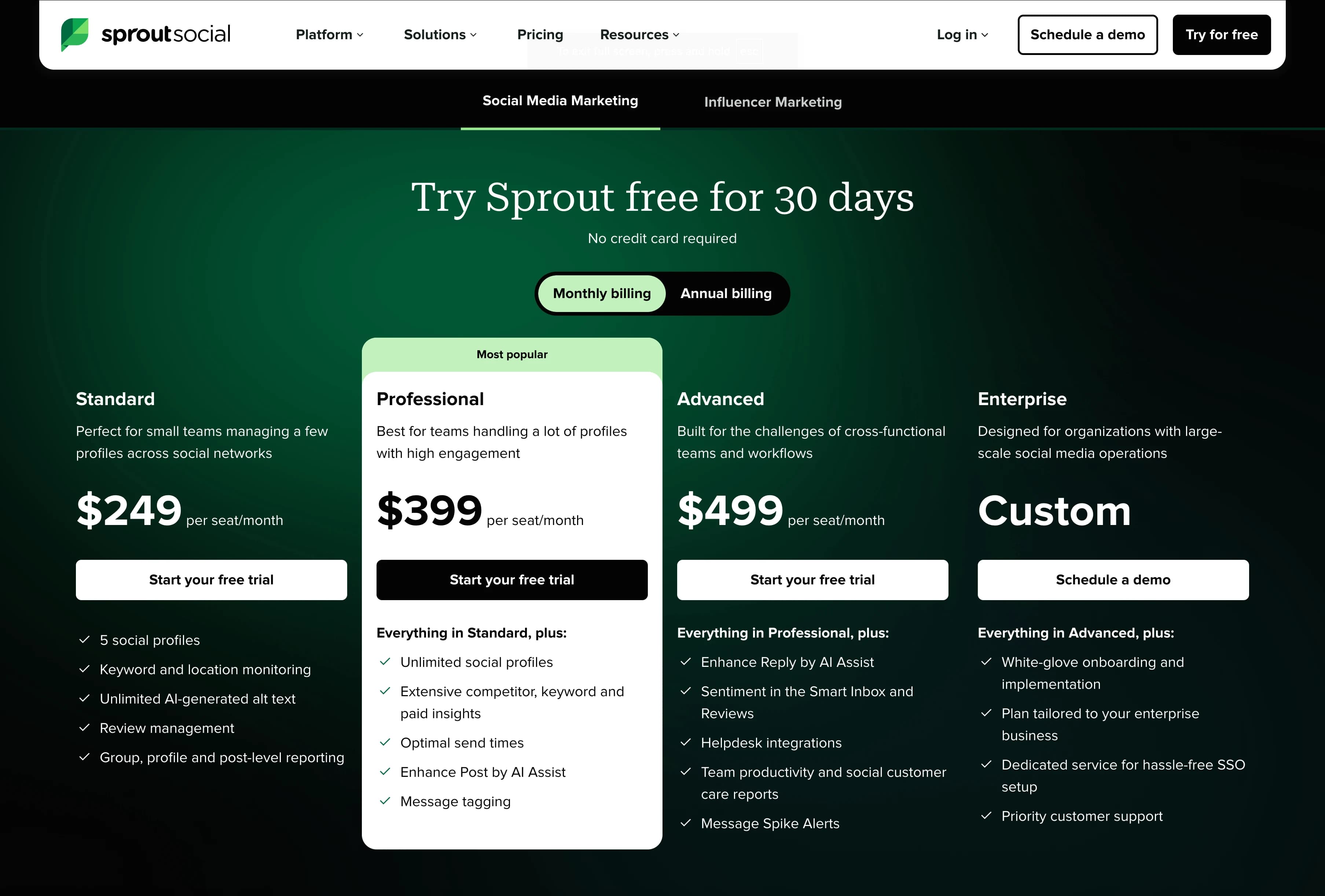
(Source: Sprout Social Pricing Page)
1. Per user pricing that limits adoption
The minimum Sprout Social's pricing per user starts at $249 per seat/month (Standard) and that is for a plan that does not have team focused features such as approvals, assignments, etc.
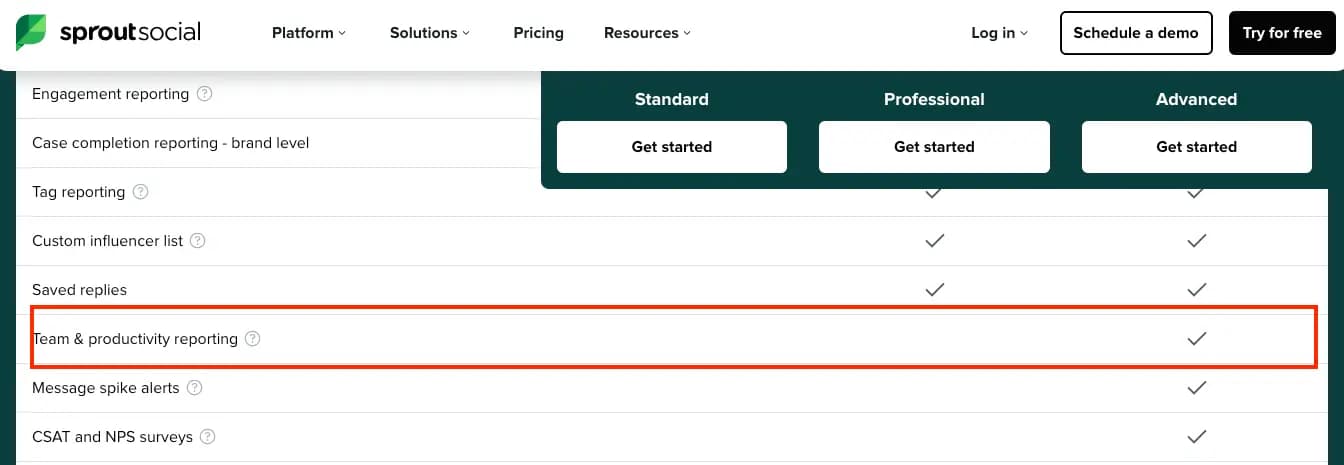
That means you have to spend $399 per seat/month (Professional) just to have "social media management" features.
$399 per user demands judicious selection, you dont want to waste it on those who won’t make the most of the tool.
Sure, you could share credentials, but with only one active session, you'll be playing musical chairs with logins all day!
Per user pricing model has been borrowed from CRM softwares which are designed only for the sales team. You don't want this decree especially on social media management softwares.
Social media is versatile so per user pricing means:
$399/user for the designer that wants to collaborate with social.
$399/user for the leadership that wants to look at reports once every quarter.
Or $399/user for any team member that have to assist the social or the community manager.

Source: Giphy
That's a lot of $399s.
Or you need to find other platforms (Slack, email, etc) to loop em in, which should have been the role of the social media management platform.
To put in numbers, Sprout Social's cost will be $10,152 per year for a small team of 4 people. On the $399 plan, it would cost $15,552 per year.
2. And there are a lot of add-ons starting at $999/mo
To use "enhanced" reports (aka premium analytics), it's an add-on.
To use "social listening", it's an add on.
Once you grow out of basic reporting dashboard, you have no choice but to opt for such add-ons.
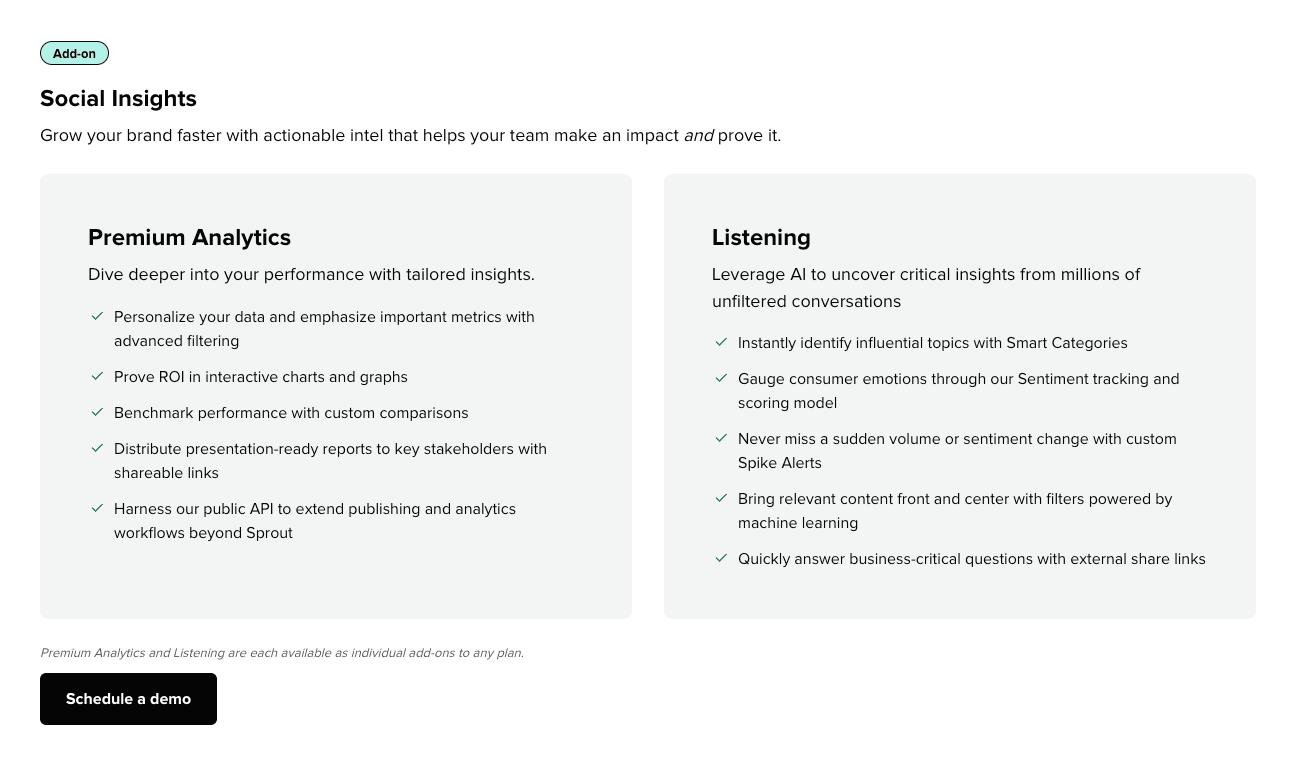
Sprout Social does not reveal the cost of any add-on. The price we've listed ($999/mo) is an average of what people are generally paying for these add-ons.
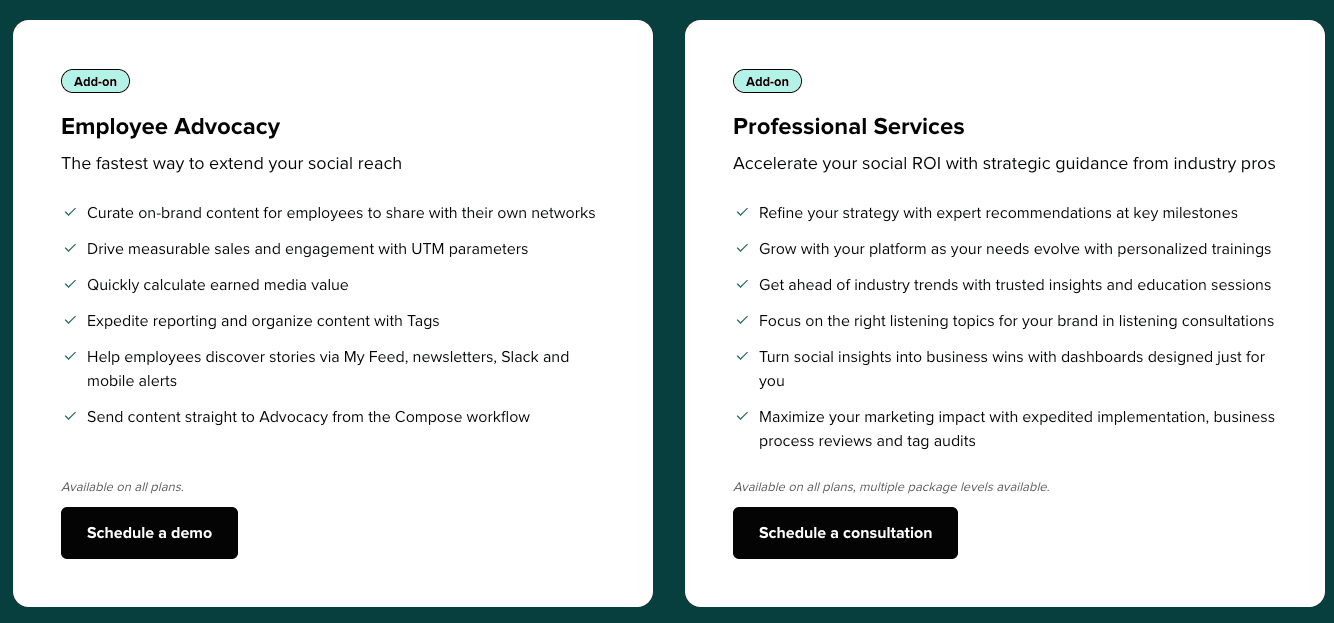
3. Slow customer service
Social media management platforms have to deal with networks, APIs and account-specific issues that requires communication with support team or your success manager (usually, not the one who sell you add-ons).
Now just to make sure your work doesn't stop, you need a platform that priortizes communication over channels that are convinent and quick.
If you aren't a high paying customer, you might feel neglected (voiced by people in the forums linked above).
Because apart from the time they are doubling the price, it might take you some time to hear back.
Got a good deal? It comes with a long-term lease or a looming raise!
You might be feeling really good about yourself if you've managed to negotiate a good deal with Sprout.
There were others who felt the same.
Should we point at the forums again?

So, where do we go from here?
We've compiled a list of Sprout Social alternatives that compete with Sprout on its merits.
We do put ourselves on the number 1 position, because Statubrew offers 1:1 feature match and the best price to value ratio (also it's our blog).
It's recommended to set up calls with multiple platforms (limit to 5) and see what's in the market and what solution fits you the best.
Sprout Social Pricing FAQs
Why is Sprout Social so expensive?
The platform mainly follows a CRM-like pricing structure and charges per user. The basic plan starts at $199 monthly. Then, more standard features like tagging, reporting, saved replies, etc., are part of the following higher plans. This is smart because creating and maintaining such a feature doesn't cost too much. Then comes an essential add-on for many businesses, a listening feature, which is super expensive itself.
Does Sprout Social provide a discounted price for non-profits?
Sprout Social only discounts non-profits for the Professional & Advanced plans.
Professional Plan: $299 → $239 per user/month (billed annually, for non-profits)
Advanced Plan: $399 → $299 per user/month (billed annually, for non-profits)
Can I try Sprout Social for free?
Yes, Sprout Social offers a 30-day free trial, and no credit card is required.
Are there any fairly-priced Sprout Social alternatives?
Yes, you can try Statusbrew, Agorapulse, Planable, & Hootsuite and get the same experience and almost the same features at 30-40% lower cost than Sprout Social.



